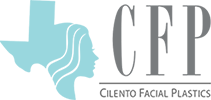Introduction:
Rhinoplasty is one of the most popular facial plastic procedures performed in the US. If you live in Houston and want to find the best rhinoplasty surgeon you are probably searching the different topics that will get you what you want to know. You will also be exploring the differences between the types of rhinoplasty.
Rhinoplasty, commonly known as a “nose job,” is a cosmetic surgical procedure aimed at reshaping the nose to improve its appearance and/or function. This intricate surgery requires a thorough understanding of nasal anatomy, aesthetics, and surgical techniques to achieve optimal results.
In this in-depth discussion, we will explore the disparities between primary rhinoplasty and revision rhinoplasty, shed light on the challenging nature of revision cases, and highlight the unique skills and qualities required of a rhinoplasty surgeon who tackles complex revision procedures.
1. Understanding Rhinoplasty:
Rhinoplasty has a long history that dates back to ancient times when nasal surgery was performed for reconstructive purposes. The ancient Indian Surgeon Sushruta performed nasal reconstruction to victims of a particularly harsh punishment involving the removal of the nose.
However, the modern concept of rhinoplasty as a cosmetic procedure began to evolve in the 19th century. John Orlando Roe, an American otolaryngologist, is often credited as one of the pioneers of modern rhinoplasty techniques, introducing various surgical principles that laid the foundation for contemporary nasal surgery approaches.
2. Primary Rhinoplasty:
Primary rhinoplasty refers to the first-time nasal surgery performed on a patient to address aesthetic concerns or functional issues. This procedure involves reshaping the nasal framework, addressing nasal asymmetry, refining the tip, reducing or augmenting the nasal dorsum, and improving overall balance and harmony of facial features. Primary rhinoplasty allows for significant changes to be made to the nasal structure, resulting in a transformed appearance.

3. Revision Rhinoplasty:
Revision rhinoplasty, on the other hand, refers to a secondary or subsequent nose surgery performed on a patient who has previously undergone rhinoplasty.
Revision cases are often more complex and challenging due to several factors, such as scar tissue formation, altered nasal anatomy, compromised blood supply, asymmetries, breathing difficulties, and aesthetic dissatisfaction from prior surgeries.
Revision rhinoplasty requires a meticulous approach and advanced surgical skills to address the issues resulting from previous procedures and achieve the patient’s desired results.
4. Changes After Primary Rhinoplasty:
Following a primary rhinoplasty, positive changes to the nasal structure and appearance may include:
– Improved nasal symmetry and balance
– Refined nasal tip shape and projection
– Proper rotation of the nasal tip
– Straightened nasal dorsum or bridge
– Reduction of nasal humps or bumps
– Correction of nasal breathing issues
Negative outcomes happen when there is one or more of the objectives above that are not achieved.
- Worse aesthetics
- Over resection of the dorsal hump
- Undercorrection or over correction of the tip rotation
If these complications occur… the patient may be seeking a new opinion and a secondary surgery.
5. Complexities of Revision Rhinoplasty:
Revision rhinoplasty presents unique challenges that differentiate it from primary rhinoplasty:
– Scar Tissue: Previous surgical incisions and tissue trauma can lead to the formation of scar tissue, making subsequent procedures more complicated.
– Altered Anatomy: Changes in nasal structure and dynamics from prior surgeries require careful evaluation and planning for revision surgery.
– Blood Supply: Revision rhinoplasty poses risks to the nasal blood supply, which is critical for tissue healing and viability. Surgeons must navigate this delicate network of blood vessels to preserve circulation.
– Patient Expectations: Managing patient expectations and addressing previous surgical outcomes require clear communication, empathy, and a comprehensive treatment plan.
6. The Specialization of Revision Rhinoplasty Surgeons:
The best rhinoplasty surgeon in Houston is someone who has mastered all of the intricacies of this very complex surgical procedure. Rhinoplasty surgeons who excel in performing complex revision cases possess specialized skills and qualities that set them apart:
– Experience and Expertise: Extensive experience in performing rhinoplasty procedures, especially revision surgeries, equips surgeons with the depth of knowledge and technical proficiency required for challenging cases.
– Comprehensive Evaluation: Thorough preoperative assessments, including nasal analysis, patient history review, and imaging studies, aid in formulating a precise surgical plan tailored to the individual patient’s needs.
– Artistic Vision: Aesthetic judgment, visual acuity, and attention to detail allow revision rhinoplasty surgeons to achieve harmonious and natural results despite previous surgical challenges.
– Dedication to Patient Care: A patient-centered approach, compassion, and commitment to achieving optimal outcomes drive revision rhinoplasty surgeons to provide personalized care and support throughout the surgical journey.
Naturally due to the increased skill needed to perform a revision rhinoplasty demands more money and more time under anesthesia.
Conclusion:
In conclusion, the differentiation between primary rhinoplasty and revision rhinoplasty lies in the complexity of the procedures and the challenges associated with correcting nasal deformities and suboptimal outcomes from prior surgeries.
Understanding the intricacies of revision rhinoplasty, including scar tissue, altered anatomy, blood supply considerations, and patient expectations, underscores the importance of entrusting one’s revision case to a skilled and empathetic rhinoplasty surgeon.
Surgeons specializing in revision rhinoplasty embody a unique blend of experience, expertise, artistry, and patient-centered care, making them invaluable in addressing even the most challenging nasal surgery cases with confidence and precision.



